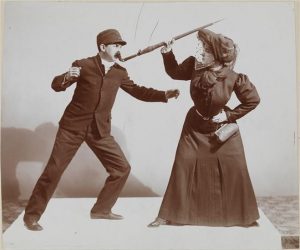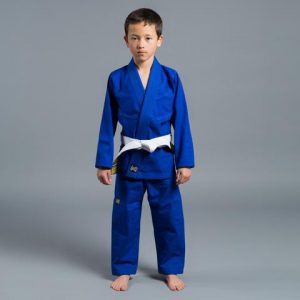One of the most common questions we get from people interested in starting BJJ is the question of what happens in a typical BJJ class. There are a lot of misconceptions about jiu jitsu and about the process of beginning the sport, so let’s clear up some of those right now. We’re going to talk about a typical BJJ class, but also about the different types of classes you might experience as a beginner in the sport. These are not specific to any academy; academies might have any or all of these types of classes. If you have specific questions about the classes offered by an academy, it’s always best to ask. However, these are the types of classes that I’ve seen in my time in the jiu jitsu world, and generally what can be expected from each.
Leveled Classes

By “leveled” classes, I am referring to the type of class in which all participants are generally the same level. Some larger schools are able to separate out beginning students from the more advanced students, providing both beginner classes and advanced classes. These “leveled” classes allow instructors to tailor information shared with their students. It protects the students: beginners don’t get overwhelmed with information, and advanced students don’t get bored. Win-win, all around!
Typically, the format of a class will include:
- Individual warm-up with running, individual movement drills, and perhaps basic partner drills
- Technique instruction and refinement
- Technique practice with a partner
- Question/answer time (usually occurs during technique practice)
- Sparring
A note about sparring: some schools allow a student to spar on their first day, while others do not. I’ll provide another post on why I believe sparring should occur (within reason) on the first day of class; however, that’s another novel to write, and something I’ll only touch on here. Essentially, sparring is the heart of BJJ; it’s also the fun part of BJJ. A student who is comfortable with the idea of sparring can always safely learn to spar on their first day with appropriate supervision and the right partner.
Typically, beginner’s classes are between 60 and 90 minutes. If you’re a beginner, expect to be immensely fatigued, even if you’re in shape. Very little will prepare you for your first jiu jitsu class, so don’t worry about getting in better shape before you get on the mat. The fatigue will pass quickly, and you’ll be having too much fun to notice anyway! Just expect to feel extraordinarily strange in your forearms the next day.
The Mixed-Level Class
This is probably the most ubiquitous type of class out there. Many academies aren’t big enough to have a dedicated white-belt or beginner class; as such, many academies choose to put beginners into their nightly class.
Most mixed-level classes will follow the same format as a leveled class: the time for the class will be either an hour or 90 minutes, although some schools choose two-hour blocks. Generally, the format will be the same as a leveled class: the instructor will run an individual warm-up with jogging, movement drills, and perhaps some partner drills, and then move into technique. Beginners will often be paired with a higher-ranking student who can oversee their progression. After technique, the class will move to sparring. The intensity and type of sparring will often be dictated by the school, instructor, and students.
Competition Classes

Competition classes are not suitable for beginning students. These are fast-paced classes with a focus on technical ability for success in BJJ competition. The format will be rigorous, usually including:
- Brief warm-up, often consisting of fast-paced partner drills, sprints, and so on, with the purpose of raising the heart rate and warming the body quickly
- Varied situational sparring, in which participants will be asked to focus on specific situations.
- “Superfights,” a type of sparring in which the class observes a single pair sparring
- Physically and mentally difficult workouts that focus on different aspects of competition.
- Difficult drills and sparring targeted at specific areas of weakness for individual students or the team as a whole.
Competition classes vary in intensity and in structure. Competition classes are sometimes integrated into “camps” leading up to large competitions, and their purpose is to get students into shape for the physical and mental stress of large competitions. These classes are also more focused on the sport aspect of BJJ, which means that beginners rarely have enough knowledge of the point system to have success in these classes.
Women’s Classes
Women’s classes also follow the typical format of a BJJ class, but they are often focused on providing women a space to train outside of the male-dominated BJJ environment. Some women’s BJJ classes focus more on the sport aspects of BJJ, while others are more geared towards women’s self defense.
Self-Defense Classes

Some BJJ curriculums offer self-defense classes or “BJJ for self defense” classes. These classes will focus more on classical self-defense problems– escaping from a headlock, verbal de-escalation, and other methods of protecting oneself in case of attack. These classes vary significantly in terms of quality and style, so it’s always best to discuss the class with an instructor from the academy to get a better understanding of what to expect from the course itself. I will also be writing a primer on “BJJ for self defense” which will be a more in-depth look at self-defense classes and what to look for in a self-defense class if learning to defend yourself is your primary goal.
No-Gi Classes

No-gi classes follow the same typical format as a gi class. Men typically wear a rash guard, shorts, and sometimes spats, while women will typically wear a rash guard and spats or a rash guard and shorts. However, if you’re new to no-gi, you should definitely expect more bumps and bruises: no-gi is fast, slippery, sweaty fun, but people doing no-gi are much more likely to accidentally catch an elbow or knee. No-gi tends to be much faster paced sparring than gi sparring. It’s just a side effect of not having any material to grab!
I always recommend starting in the gi. Switching from gi jiu jitsu to no-gi is always much easier than trying to go from no-gi to gi, due primarily to the number of grips that you can make when doing BJJ in the gi. Integrating no-gi practice into your training schedule after you have a few months of gi under your belt is an excellent way to augment training.
Most people experience a love/hate relationship with no-gi. It’s perfectly normal to feel as though no-gi training is slightly more uncomfortable, particularly for women who are new to the sport. However, that discomfort will likely fade over time. Instructors can make a no-gi class more inclusive and comfortable for everyone by ensuring that everyone is wearing appropriate no-gi attire, and that no one is likely to experience wardrobe malfunctions.
Children’s Classes

Children’s classes follow the same structure as a typical adult class. However, for younger students, the format is often significantly shortened, and games are integrated into the curriculum for the warm-up and throughout the class. Ideally, the classes are split into different age groups to protect smaller children from larger ones.
Children of all ages can and should spar in every class. Supervised sparring is safe for children, and instructors should always be closely monitoring their students to prevent injury. Children’s sparring rounds should be between 1-4 minutes, depending on the age. Older, more advanced pre-teen and adolescent students can spar for longer, or join the adult classes.
Open Mat
An open mat has no real format. Anyone can join; it is the responsibility of the participants to structure their open mat as they wish. It’s a time when many people choose to get extra sparring or drilling in without the added structure of a class. It’s also often a time for people from other academies to visit with a new academy and experience new people’s styles of jiu jitsu. Some academies, however, don’t allow drop-ins from other academies; it’s entirely case-by-case.
At Escapology, we will likely be offering beginner classes, fundamentals classes, advanced classes, children’s classes, no-gi classes, open mat, and competition classes. More information on our specific schedule and class system will be available at a later date.